Flower of love, flower of death, beautiful women's flower is only part of the eloquent names of a very spectacular flowering plant - hibiscus. This flower has conquered many of them with its beauty, because it is not for nothing that it is considered a national flower in the Hawaiian Islands.
It is there that he is one of the most important jewelry not only gardens, but also female hairstyles. Despite the fact that it is a tropical and subtropical flower, there are species that can be raised in our climatic conditions, which cannot but rejoice. After all, such beauty on the site would like to get many. Bright and beautiful flowers in combination with decorative foliage are ideal for creating unique garden compositions, as well as for use in landscaping rooms.
In this article, we will consider the following features and description of hibiscus, as well as learn all the main characteristics of species and varieties of this exotic plant. We describe all the most important nuances of agrotechnics of Hibiscus growing at home and in the open ground.
Features and description of hibiscus
Hibiscus is a leaf fall and evergreen tree, grassy and shrub plant of a large family of Malvic. The natural habitat of this beautiful flower is South Asia, as well as Africa and America. Hibiscus is a tropical and subtropical plant that loves a hot and humid climate. Our latitudes are also possible to grow this exotic flower, but only some species. The most popular is the Hibiscus of the garden, the birthplace of which is considered the Hawaiian Islands. It is predominantly and will be our article.
The name of Hibiscus itself comes from the word "Hibiskos", which in the ancient times in Greece marked alta.
Hibiscus is valued in many people of the world and countries. In the Hawaiian Islands, he is a symbol of love and beauty. Often used in conducting various ceremonies. Hibiscus flowers are celebrating tourists at airports. Therefore, it is not for nothing that it is considered a national flower. In some European countries, this flower is symbolized with a flower of death. It is believed when the room hibiscus is beginning to turn around and shut down the leaves, some of the loved ones will get sick. In the east, this flower is absolutely opposite. It is a peculiar energy that gives new forces. It is with this meaning that one of the ways of using the Chinese hibiscus is the brewing of the Karcada tea, which by many loves in our country.
Hibiscus description:
- Hibiscus can be a leaf fall or evergreen plant, also distinguish with perennial and annual types.
- Diverse and form in which this numerous family is represented. There are hibiscus grassy, \u200b\u200bhibiscus tree-shaped, hibiscus shrub and semi-student. Therefore, there is a huge number of options for using in landscape design.
- The height of the plant will depend on a particular variety, as the tree hibiscus in height grows more than herbaceous.
- The leaves of hibiscus are oblong, on the edges of the outstand, to the stalk are fastened with the help of cuffs. There are various shades of green in color.
- The most important decoration of this plant is flowers that simply amazed with their appearance.
- Hibiscus flowers have a funnel form, which is formed using 5 or more petals.
- The size of the colors of various types of hibiscus can vary from 6 to 15 cm, sometimes there are plants with flowers in diameter as a soccer ball.
- The colors of hibiscus colors are also diverse: there are one-photon flowers of red, pink, white, lilac, blue shades, as well as two-color and with a contrasting border along the edge.
- In the form of petals, the flowers also differ in different varieties: there are simple, terry.
- Blossom in hibiscus long. Garden hibiscus flowers bloom only one day, and then instead of them appear new and lasts it for several months - from the middle of the summer and before the onset of frosts.
- The fruit is a box with seeds consisting of 5 sash.
- To date, there are more than 220 types of hibiscus.
Main types and varieties of hibiscus
To date, there are a large number of species of this beautiful flower, but on our territory it is possible to grow only the varieties of hibiscus of the Syrian, triple and hybrid. Consider the main characteristics of some types of hibiscus and their most popular varieties.
Syrian Hibiscus
It is the most suitable kind of cultivation in our climatic conditions, as it has excellent frost resistance. The birthplace of this species is China.
- In nature, it grows in the form of a leaf falling shrub, which can be in height to reach 5-6 meters.
- In the culture, the growth of Hibiscus Syrian reaches only 3 meters, but can be cultivated both as a shrub, and as a small tree.
- It is this kind of hope of hibiscus is the national flowers of the Hawaiian Islands.
- This plant is formed by reprehensive shoots that are densely supreme, egg-shaped leaves.
- In the form of the leaves, slightly dissected, in length about 10 cm.
- Flowers are quite large, in diameter can reach 6-12 cm. Flowers are located singly, there are different colors. It is for this species that the one-day flowering of each flower is characterized, on a shift that the next day disrupts the other.
- Syrian hibiscus is distinguished by excellent frost resistance - can endure up to minus 25 degrees.
- You can grow as a room flower.
Popular Hibiscus Syrian Sorts:
- Diana variety. Shrub shape of Hibiscus Syrian, which can reach 2 m in height. White flowers blooms, whose petals on the edge are slightly wavy. The diameter of one flower is average 12 cm.
- Grade "Ardens". Flowers with lilac-pink flowers, dissolved in the early summer. It is considered a perennial plant that is formed by reprehensive shoots. Practically does not require trimming. Height can grow up to 3 m.
- Grade "Pink Jait". Hybiscus shrub shape, which blooms with pink flowers with purple spots in the center.
- Grade "Blue Bird". It has a very unusual coloring of colors - bright blue with a red spot in the center. In the height, this shrub can reach 4 m.
- Grade "Carneus Plenius". This variety has flexible shoots. Flowers terry, gentle pink flowers with a bright purple spot in the center.
Hibiscus Troych
The birthplace of this type of hibiscus is Africa. The plant in height reaches 80 cm, has a rod root and renovative branches. Leaves from this type of hibiscus three-part, hence the name. Mount the leaves to the stalk with the help of cuffs. Flowers are very small, just 4 cm in diameter. Flower yellow with red middle. This type of hibiscus has a very interesting feature - his flowers are dissolved only in the morning for several hours, and then repaid again in buds.
Hybiscus hybrid
This species was specially removed from the crossing of three types of hibiscus: bright red, marsh, sharp. It is a herbous perennial plant that blooms very large and bright colors.
Popular varieties:
- Sort "Youth". A shrub grade, which in height can reach 1.5 m. Flowers in diameter reaches 10 cm and in shape resemble tulips. In color they are gentle pink with a white core.
- Grade "Late". The thick and compact bush, which in height can reach 1 m. Flowers with raspberry flowers reaching in diameter 7 cm.
Chinese hibiscus
This variety is known to many, since in our latitudes is hibiscus homemade. It is an evergreen shrub or a tree hibiscus, which can reach 4.5 m. The leaves are oblong, ovoid shape, can reach 15 cm. Flowers for this type of single, are attached on long blossoms. Form of funnel and bells. In the diameter, the flower can reach 10-12 cm. The color is very diverse: from white to red and purple.
Popular varieties:
- Grade "Borias". Flowers with large lemon and white shade colors with corrugated edge and purple core.
- Grade "Purple Majestic". Differs in purple flowers with white specks and corrugated edges.
Hibiscus breeding methods
Hibiscus multiplies in various ways. Sometimes it may depend on a specific species. For example, hybiscus hybrid multiplies the division of the bush, stalling and vaccination. However, most of the types of this culture can be breeding seeds, cuttings, tanks and the division of the bush. The most simple and frequently used methods are the reproduction of the hibiscus of garden seeds and cuttings.
Seed reproduction of hibiscus
- First of all, it is necessary to collect hibiscus seeds. You can determine the mature fruits in color - they will be brown. It is necessary to collect neatly, as the seeds are small.
- The optimal time for sowing seeds is January-March.
- Pre-seeds must be treated with a solution of manganese.
- Next, select a suitable container and fill it with soil mixture consisting of peat and sand.
- Seeds are sown on the prepared ground and all the container is covered with glass or film.
- The complexity is the further content of the container with seeds, because for their germination, a rather high temperature is needed - within 25-27 degrees. It is also desirable to provide additional heating of the bottom of the container.
- You will need daily care, which consists in ventilating and moisture.
- When the first strong leaves appear, seedlings need to be seeded on individual pots.
- It is important that the seedlings of hibiscus get enough light, otherwise they can be pulled out and become fragile.
- In the open ground can be planted in May.
- An interesting feature of the hibiscus of the garden is that he can multiply by self-sowing at the time of the full ripening of seeds.
- Hybiscus hybrid varieties will not succeed in this way, since these plants fully lose their maternal signs.
Pencornia reproduction
This is perhaps the easiest and most effective way to reproduce hibiscus.
- Hibiscus cuttings should be harvested in summer.
- To do this, on an adult plant, choose a strong and healthy escape. It can be chopped into a few cuttings of 10-12 cm, the main thing is that everyone has several intersezlies.
- Cut the cuttings need a sharp secret at an angle.
- Next, remove all the leaves from the bottom of the cutting, the top can be left.
- It is recommended to handle the cuttings stimulants of root growth. To do this, place the cuttings into the container with this solution directly before planting.
- Next prepare the soil mixture that will consist of peat and sand. The cuttings can be planted into the greenhouses, and you can create greenhouse conditions at home, putting a stalk into a pot and covered with a film.
- It is advisable to provide lower heating cuttings.
- The rooting of the cuttings occurs in about a month, after which they need to be transplanted into individual pots for rearing.
- These pots should be filled with another soil mixture consisting of deciduous land, peat, sand and turf.
- Behind the cutlets, they take care until the moment of the formation of a strong bustle, after which it is plugged and transplanted into open ground.
- Hibiscus grown in such a way, the landing can be blooming.
Stages of preparation before landing hibiscus
To obtain a beautiful garden hibiscus, it is necessary to carefully prepare before landing. It is important to purchase high-quality hibiscus seedlings, as well as correctly pick up the landing space on its plot. Also, you can not forget about thorough soil preparation for planting this exotic plant.
Stage 1. Selection of seedlings
Hibiscus saplings buy best in specialized stores and nurseries. Only so you will be confident that the hibiscus of your chosen variety will actually grow in your site. Avoid acquiring seedlings on the spontaneous markets and in unfamiliar people, thus the risk of extreme-quality planting material increases.
When buying seedlings, take into account the place where they will be planted. After all, all varieties differ in altitude and in color coloring. It is also important to carefully inspect the shoots of a seedling and leaves. They should not be damaged or signs of the disease. If you acquire a seedling with an open root system, then inspect it for dry and broken roots.
Stage 2. Selecting a place for landing hibiscus
Hibiscus is most of its part with a tropical plant, so it is important to choose a place suitable for its growth and blossom. If you make a mistake with this choice - the plant may not bloom. The optimal place for landing hibiscus is an easy semita so that the seedling in sufficient quantities receive sunlight, but it had been protected from direct rays. It is also important that the place is not in the lowland - Hibiscus does not endure a long stagnation of moisture in the roots.
When choosing a place, consider also the planned garden composition you want to get in the end. Some hibiscus varieties can be planted in public, but the place must be chosen once and for a long time. When driving, you can break the flowers.
Stage 3. Soil preparation for landing
It is important to pay enough attention to the preparation of the soil under the landing. These plants prefer to grow on weakly acid or neutral soils. It should be very fertile and perfectly passing the air and moisture. Hibiscus reacts well to the high content of the organic matter in the soil.
Before boarding the selected place, it is necessary to thoroughly overlook, having prepared an soil mixture for landing, which should consist of peat and fertile land.
Landing hibiscus in open ground
After all preparatory work, you can start landing a hibiscus seedling. The optimal time for disembarking it into open soil Spring, when the threat of return night frosts passes.
- Before boarding, prepare the landing pits at the selected place.
- If you sit down several seedlings together, then definitely observe the distance between them about 1-1.5 m.
- The size of the landing well should be twice the root system with a lore earth.
- At the bottom of the pit, be sure to place a layer of 15 cm drainage to prevent the stagnation of moisture at hibiscus roots. As a drainage, you can use broken brick.
- On the drainage layer, push the sand layer, and then compost, after which the sand is again.
- Next, carefully get a hibiscus seedling from the container, trying not to damage the roots.
- Place the seedling in the pit and fall asleep the roots prepared by the soil mixture, which should consist of a delicate earth, peat and sand.
- The sapling must be shuffled so that the root neck is only a little fall asleep.
- Next, it is necessary to glue a planted seedling, making a remission for watering around it.
- Abundant Pour Hibiscus with water.
Features of the care of hibiscus in the open soil
The care for hibiscus is not difficult, especially if it is planted in a suitable place. In the future, the young plant needs periodic watering, loosening, feeding and pruning.
Watering
The plant needs regular abundant irrigation. The correct watering mode for hibiscus is to wait for the full drying of the land around the plant. And only after that water. However, in the most dry time of the year you will have to watered almost daily so that Hibiscus does not die. If there is a cool weather, then watering, on the contrary, reduce. A full-fledged growth of hibiscus depends on the competent polyvov regime.
Loosening and mulching
Hibiscus loves to grow on loose and air soils, so periodically after irrigation, the soil should be loosened to ensure the influx of air to the roots. During this process, we need to remove weeds. To reduce the appearance of weeds and preventing the evaporation of moisture, the rolling circle can be meditated. The mulch is used dry peat, sawdust or trees.
Podchar
For a full growth and flowering of hibiscus, it is necessary to feed it and do it repeatedly. Hibiscus needs a sufficient potassium, which can be made every 14 days, and it is also important to feed them hibiscus in the fall before the onset of cold weather. It is also important to fertilize every two weeks of a moderate dose of phosphoric and nitrogen fertilizer. Especially in these fertilizers, the plant needs at the moment of active vegetation.
Trimming hibiscus
Hibiscus needs a periodic sanitary trim, which should be conducted early in spring. In its process, it is necessary to remove all weak, damaged and broken branches that brake the growth of strong and young shoots. It is also necessary to partially delete last year's increase in order to stimulate the growth of a large number of young shoots with floral kidney. Do not forget during the flowering of the plant periodically delete the shut-down buds, because it will contribute to the emergence of new ones.
Fighting pests and diseases
In the process of care for hibiscus, it is necessary to identify the appearance of pests and various diseases on the plant and deal with them effectively. This culture is rarely amazed by diseases and pests, but they still can appear due to improper plant care. Aphids, trips and whiteflies appear from the pests on hibiscus. To combat them, you need to use insecticides, for example, carbofos.
Of the diseases, chlorosis appears most often on hibiscus. In this case, the plant falls out the bottom leaves. This disease can be prevered, competently introduce fertilizers containing iron and nitrogen.
Hibiscus cultivation in the tub
Some gibiscus varieties can be grown in ads. As a result, you will get the original and bright object of your landscape design. However, the process of cultivation has some nuances:
- Pampering plant is more demanding in care.
- Before the start of the flowering of hibiscus, it is necessary to choose the most optimal bid location, as it is not recommended to move in the future. Hibiscus can lose their blueries.
- Hibiscus growing in a tub, more than usual needs trimming to give the shape of Crown. Most often they are cut in the shape of a ball.
- Watering Patchy Hibiscus is needed moderately. The main thing is that the land does not have time to rehabilitate. Also, the plant speaks well to the regular spraying of the crown.
- For full growth, it is necessary to feed Hibiscus with phosphorus-containing fertilizers. Approximately 1 time in 2 weeks.
- In winter, such a plant must be transferred to a light and fairly warm room with an average temperature of 12-14 degrees.
- For landing in the shops suitable Hibiscus Chinese or Chinese rose.
Photo Hibiscus
You can more clearly see all the features of this exotic plant on the proposed photos.
Use as a room plant
Tree Hibiscus
Hibiscus grassy
Make your garden or a plot in unique and unique is not difficult, the main thing is to choose bright and memorable plants. It is to such an excellent hibiscus that will transform any landscape with its blossom.

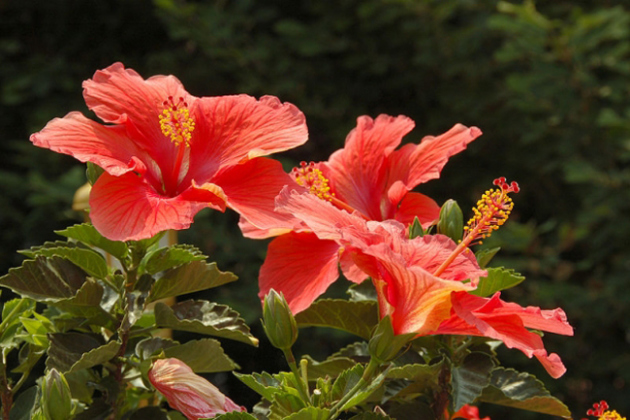
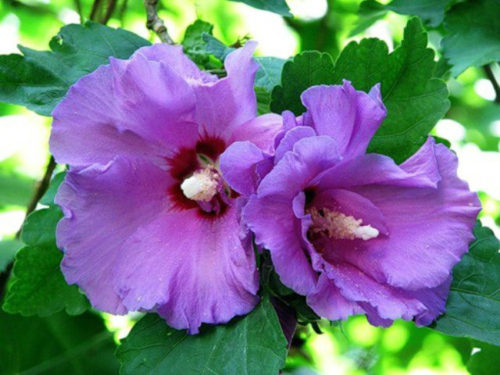
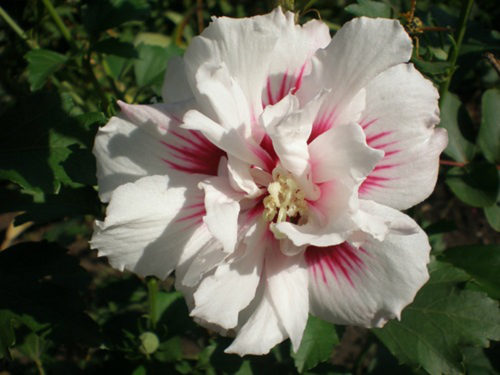

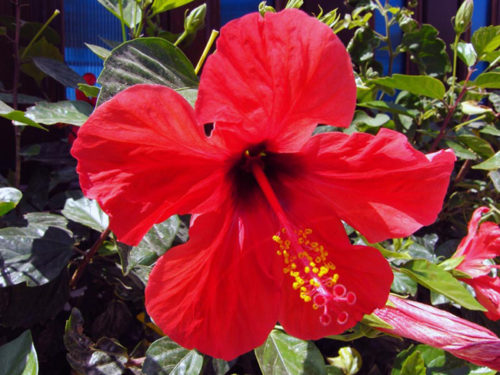
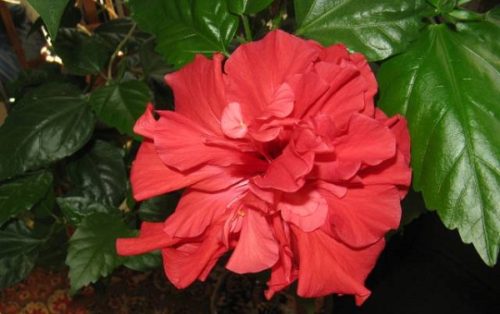
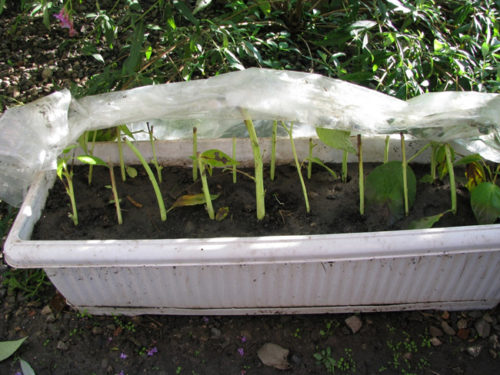
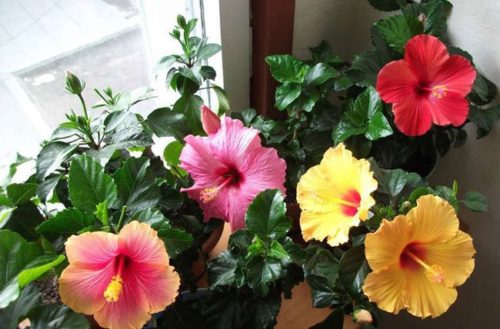
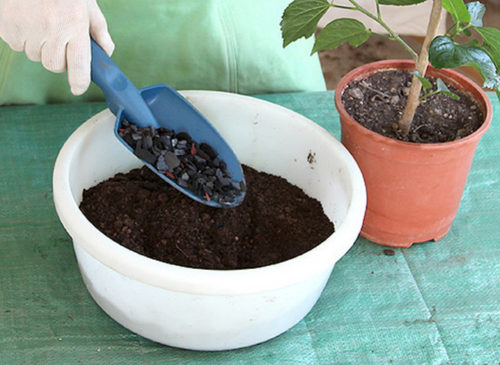
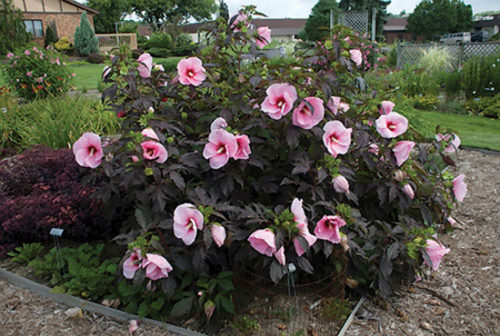
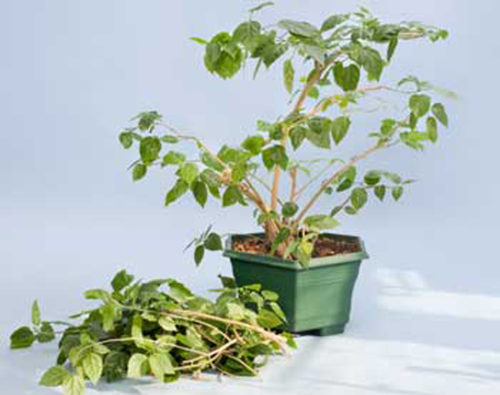
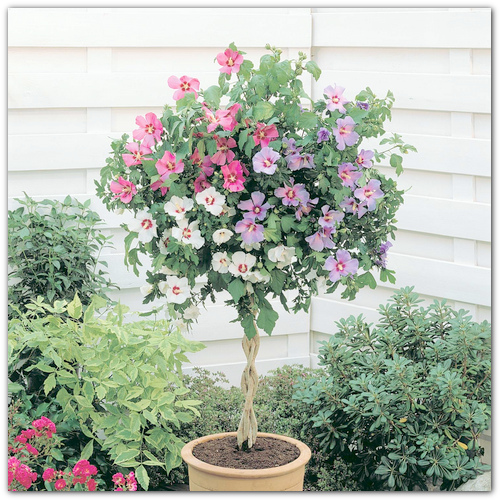
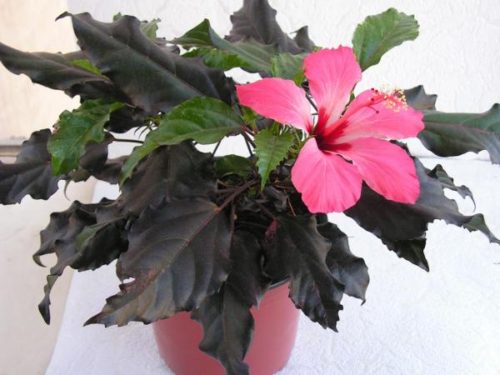
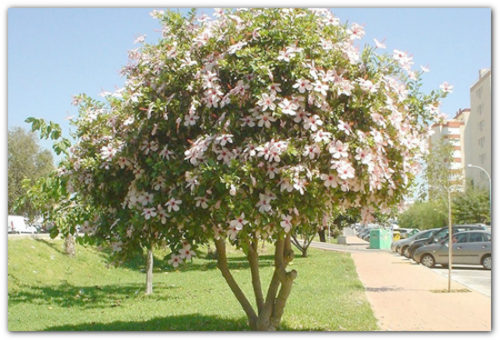
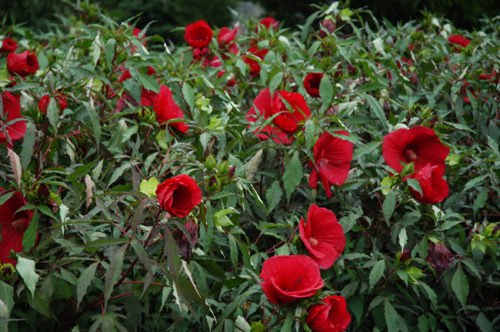












 Start a discussion ...
Start a discussion ...